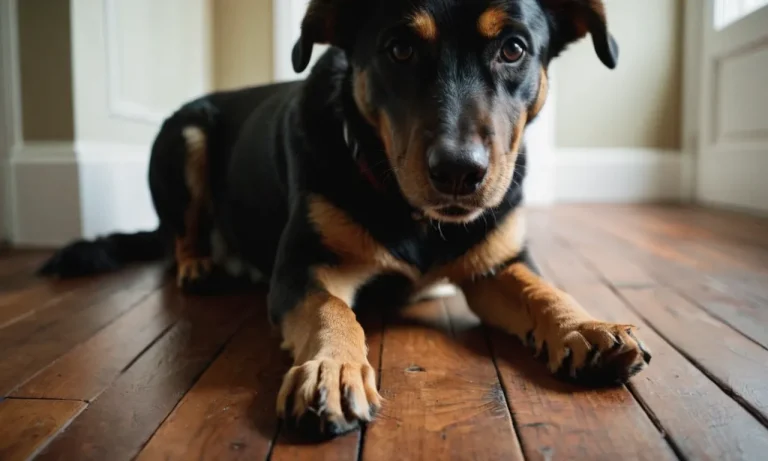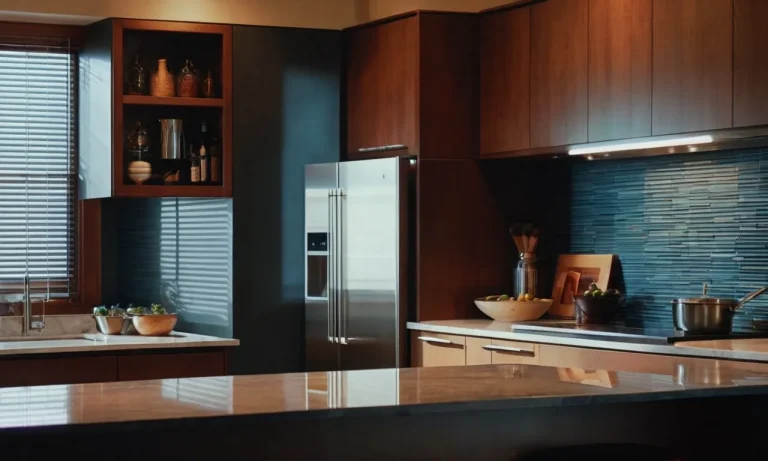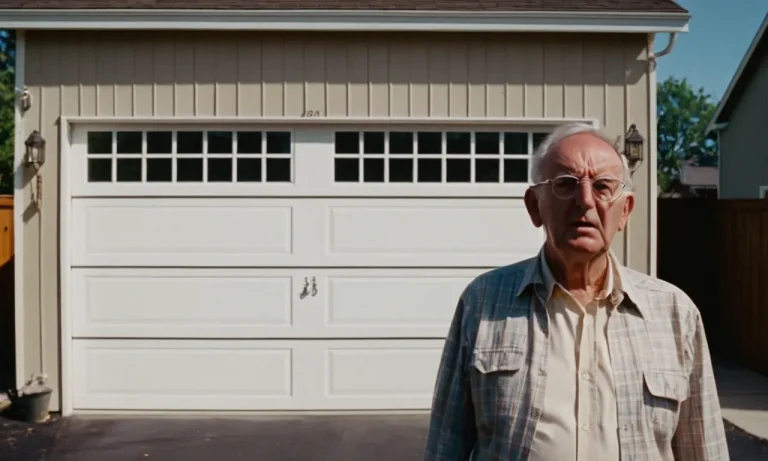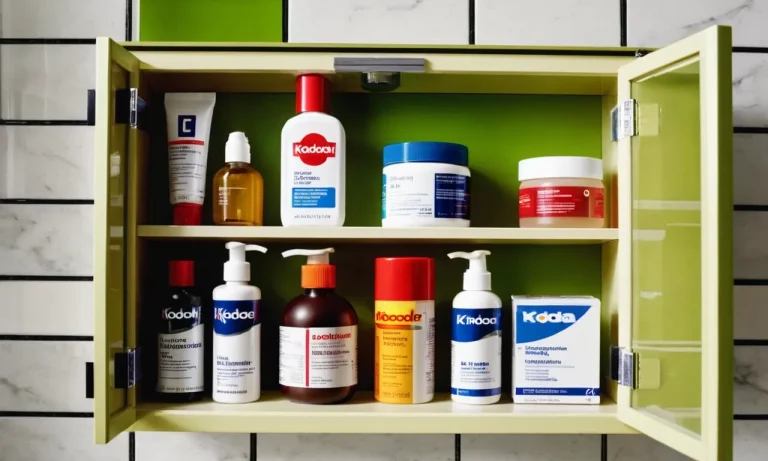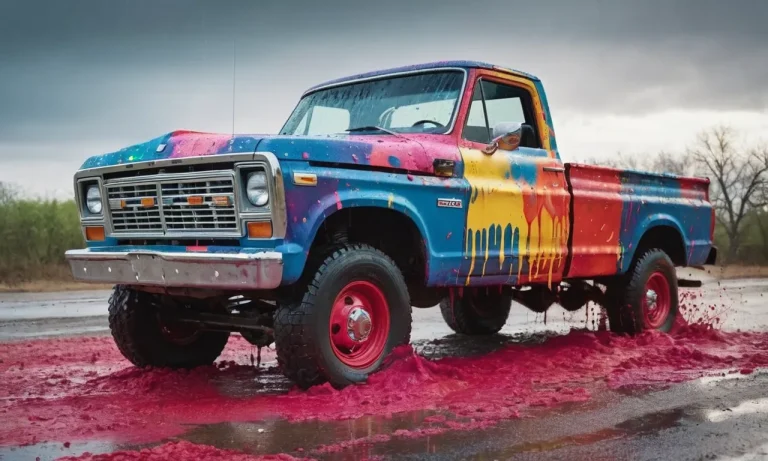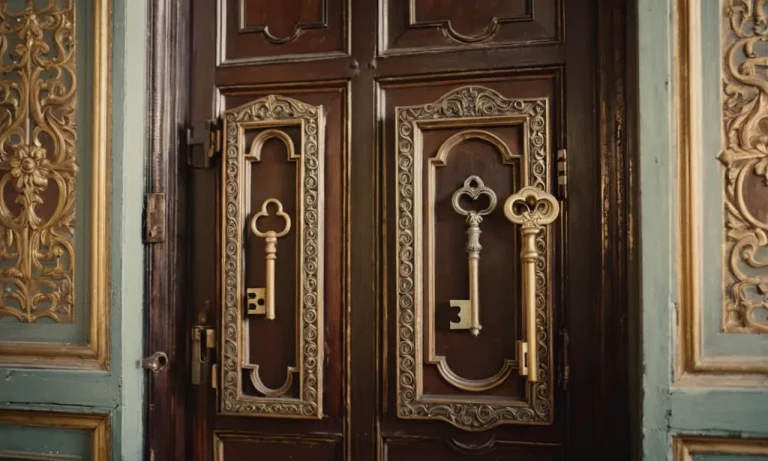Can You Paint Over Spray Paint? A Comprehensive Guide
Painting can be an inexpensive and convenient way to change up the look of a space. However, if you have surfaces covered in spray paint, you may be wondering if you can simply paint over it or if more work is required.
If you’re short on time, here’s a quick answer to your question: You can paint over light coats of spray paint as long as you use a primer made for bonding to slick or glossy surfaces. But if the spray paint is thick, chipping or hasn’t fully cured, you’ll need to remove it before repainting for the best results.
In this comprehensive guide, we’ll dig into the details on whether you can paint over spray paint and how to get the best results.
What Type of Spray Paint Is On the Surface?
Before you can determine whether you can paint over spray paint, it’s essential to understand what type of spray paint is already on the surface. There are a few factors to consider when assessing the type of spray paint:
Original Paint vs. Spray Paint
The first thing to determine is whether the surface was originally painted with traditional paint or if it was spray painted. Original paint typically consists of oil-based or latex-based paint, while spray paint comes in a variety of formulations such as acrylic, enamel, or lacquer.
It’s worth noting that spray paint tends to have a different texture and finish compared to traditional paint. Spray paint is often used for its convenience and ability to provide a smooth, even coat on various surfaces.
Light vs. Heavy Coverage
Another factor to consider is the extent of the spray paint coverage on the surface. Some spray paint applications may be light and transparent, allowing the original paint color to show through. In contrast, heavy coverage can completely obscure the original paint.
If the spray paint coverage is light, it may be easier to paint over it, as the original paint color and texture won’t be significantly altered. However, if the spray paint coverage is heavy, additional preparation steps may be necessary to ensure a smooth and uniform finish.
Flat/Matte vs. Glossy Finish
The finish of the spray paint is also important to consider. Spray paints come in various finishes, including flat/matte and glossy. The type of finish can affect how well new paint adheres to the surface and the overall appearance of the final result.
Flat or matte finishes tend to have a slightly rough texture, which can provide better adhesion for new paint layers. On the other hand, glossy finishes have a smooth, shiny surface that may require additional preparation, such as sanding or priming, to ensure proper adhesion.
It’s important to thoroughly assess the type, coverage, and finish of the existing spray paint before deciding whether to paint over it. In some cases, it may be necessary to remove the spray paint entirely or take additional steps to ensure a successful paint job.
How to Prep Spray Painted Surfaces Before Painting
Address Any Peeling or Chipping Paint
Before you start painting over spray paint, it’s important to address any peeling or chipping paint. This can be done by using a scraper or sandpaper to remove any loose or flaking paint. It’s crucial to create a smooth and even surface for your new paint to adhere to.
Degrease the Surface
Once you’ve removed any peeling or chipping paint, it’s important to degrease the surface to ensure proper adhesion of the new paint. You can use a mild detergent mixed with water to clean the surface. Make sure to rinse it thoroughly and allow it to dry completely before moving on to the next step.
Sand Glossy Surfaces
If the spray painted surface has a glossy finish, it’s recommended to sand it lightly to create a better surface for the new paint to stick to. Use fine-grit sandpaper and gently sand the surface in a circular motion. Be cautious not to sand too aggressively, as it may damage the underlying surface.
Use Primer Made for Slick Surfaces
Before applying the new paint, it’s advisable to use a primer specifically designed for slick surfaces. This will help the new paint adhere better and provide a more durable finish. Apply the primer evenly using a brush or roller, following the manufacturer’s instructions for drying time.
By properly prepping the spray painted surface before painting, you can ensure a smooth and long-lasting finish. Remember to address any peeling or chipping paint, degrease the surface, sand glossy surfaces, and use a primer made for slick surfaces.
Doing so will help you achieve professional-looking results.
Techniques for Applying New Paint Over Spray Paint
Use a Paint Sprayer for Large Areas
If you need to paint over a large area that has been previously spray painted, using a paint sprayer can be a highly efficient technique. Paint sprayers allow for quick and even application of paint, ensuring that the new coat covers the old spray paint effectively.
This method is particularly useful for walls, fences, or any other large surfaces that require a fresh coat of paint. Remember to clean and prepare the surface properly before using a paint sprayer for the best results.
Use Synthetic Paint Brushes for Edges and Small Spaces
When it comes to painting over spray paint in edges and small spaces, using synthetic paint brushes can make the task much easier. Synthetic brushes are known for their ability to provide smooth and precise strokes, allowing you to paint with precision and control.
Whether you’re tackling trim work or intricate details, using the right brush will ensure that the new paint adheres well and blends seamlessly with the existing spray paint. Make sure to choose the appropriate brush size for the specific area you are working on.
Apply Thin, Even Coats Allowing Proper Drying Time
One of the most important aspects of painting over spray paint is to apply thin, even coats of new paint. This helps to prevent drips, clumps, and an uneven finish. It is crucial to allow each coat to dry properly before applying the next one.
This ensures that the new paint adheres well to the old spray paint and reduces the risk of peeling or cracking. Follow the instructions provided by the paint manufacturer regarding drying times and number of coats needed for optimal results.
Remember, painting over spray paint requires careful preparation and execution. By following these techniques, you can achieve a smooth and professional-looking finish. If you need further guidance, it’s always a good idea to consult with a professional painter or refer to credible websites such as DIY Network or Family Handyman for more detailed instructions and tips.
How to Deal with Bleed-Through
Bleed-through occurs when the original spray paint color shows through the new layer of paint. This can be frustrating and can ruin the overall look of your project. However, there are a few steps you can take to effectively deal with bleed-through and achieve a flawless finish.
Apply Stain Blocking Primer
One of the most effective ways to prevent bleed-through is by applying a stain blocking primer before painting over spray paint. Stain blocking primers are specifically designed to seal the surface and prevent any stains or colors from bleeding through the new layer of paint.
These primers create a barrier that prevents the original spray paint from showing through and ensures a smooth, even finish.
When choosing a stain blocking primer, opt for one that is specifically formulated for spray paint. This will ensure better adhesion and compatibility with the existing paint. Apply the primer evenly over the surface, following the manufacturer’s instructions.
Allow the primer to dry completely before applying the top coat paint.
Use an Opaque Top Coat Paint
Another effective way to deal with bleed-through is by using an opaque top coat paint. Opaque paints have a higher pigmentation and provide better coverage, making them ideal for covering up previous paint layers.
They are designed to completely block out any underlying colors or stains, resulting in a smooth, solid finish.
When selecting an opaque top coat paint, look for one that is specifically formulated for spray paint applications. These paints are typically thicker and have better coverage, ensuring that the original spray paint color does not bleed through.
Apply the top coat paint evenly over the primed surface, following the manufacturer’s instructions. Multiple coats may be necessary to achieve the desired opacity and coverage.
Note: It’s important to keep in mind that the effectiveness of the stain blocking primer and the opacity of the top coat paint may vary depending on the type and quality of the spray paint that was initially used.
It’s always a good idea to test a small area before proceeding with the entire project to ensure satisfactory results.
For more detailed information and step-by-step instructions on how to deal with bleed-through when painting over spray paint, you can visit reputable websites such as familyhandyman.com or thespruce.com.
These websites provide comprehensive guides and expert advice on various painting techniques and troubleshooting common painting issues.
When to Remove Spray Paint Before Repainting
When it comes to repainting a surface that has been previously spray painted, there are certain situations where it is necessary to remove the old spray paint before applying a new coat. Here are a few scenarios where removing the spray paint is recommended:
Thick, Heavy Layers of Spray Paint
If the surface has multiple thick layers of spray paint, it is advisable to remove them before repainting. Thick layers can create an uneven texture and may not allow the new paint to adhere properly. Removing these layers will ensure a smooth and even surface for the new paint to adhere to.
Poor Adhesion to the Surface
Another reason to remove spray paint before repainting is if it is not adhering well to the surface. This can happen if the surface was not properly prepared before spray painting or if the paint used is not compatible with the surface material.
In such cases, removing the existing spray paint will allow for better adhesion of the new paint.
Incompatible Paint Types
Using incompatible paint types can also lead to the need for removing spray paint before repainting. For example, if the previous spray paint is oil-based and you want to use a water-based paint for the new coat, it is recommended to remove the old paint.
Mixing different types of paint can result in poor adhesion, peeling, and other issues.
It is important to assess the condition of the existing spray paint and the surface before deciding whether to remove it or not. In some cases, light sanding or priming may be sufficient to ensure proper adhesion of the new paint.
However, if the spray paint is thick, not adhering well, or incompatible with the desired paint type, it is best to remove it before repainting.
For more information on removing spray paint and repainting surfaces, you can visit TheSpruce.com or FamilyHandyman.com.
Conclusion
Spray paint doesn’t have to be a permanent eyesore if you want to change up a space. In many cases, you can successfully paint over light layers of spray paint by properly prepping the surface and using compatible primer and paint.
However, if the spray paint is thick, chipping or hasn’t fully cured, it’s best to remove it completely before repainting. Taking the time to remove incompatible paint ensures the new paint adheres properly and lasts.
With some strategic preparation and paint choices, you can give spray painted surfaces a brand new look. Just be sure to assess the existing paint thoroughly and take steps to ensure adhesion before applying fresh coats of paint.


